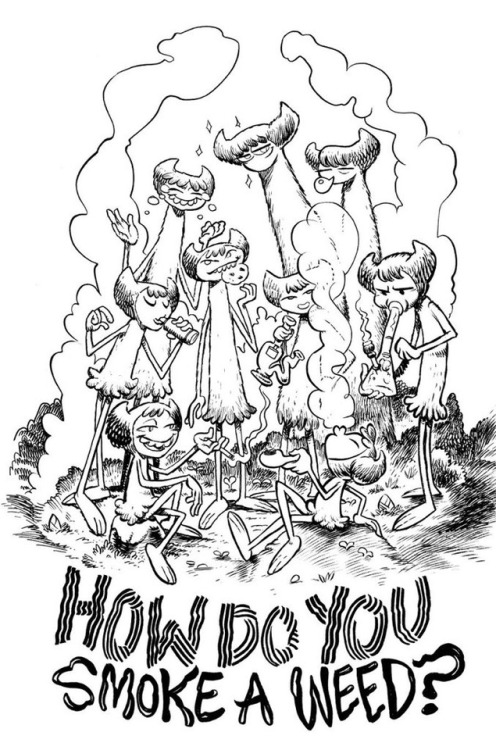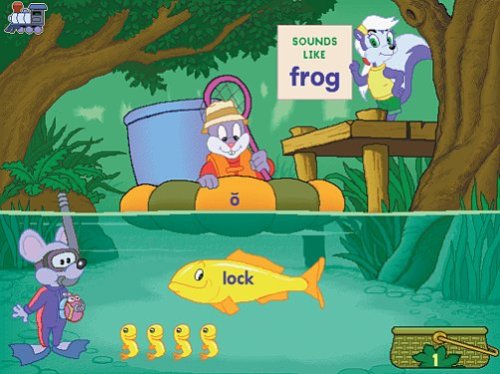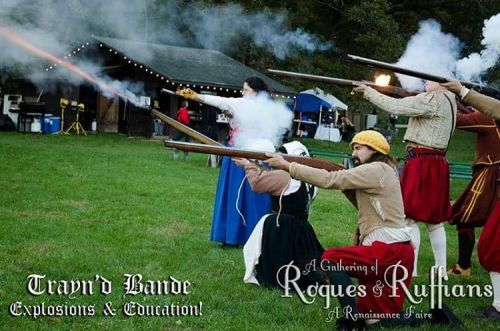#edutainment
There was no Adventure Log last week because I spent the entire week ploughing through a huge pile of essays. As compensation, this week I have hired a professional. Sit back and relax as urbanAnchorite and I take you on a tour of the early-90s edutainment software ‘scene’, a scene which turns out to have had a greater influence on both of us than previously suspected.

Below the cut: Granny’s Garden, Winnie the Pooh in the Hundred Acre Wood, L: A Mathemagical Adventure, Stickybear Math Town, Hazard/Rescue, Treasure Mountain!, and a couple of runners-up.
GRANNY’S GARDEN (BBC/ACORN, 1983)
pT: Granny’s Garden 'served as a first introduction to computers for many schoolchildren in the United Kingdom during the 1980s and 1990s’, saith Wikipedia. Yes. It also served as a first introduction to fear.
A strange thing about being five years old is that extremely rudimentary puzzles are still the Voynich fucking Manuscript. Because your gelatinous, ill-knit brain hasn’t yet wrapped round the entire concept of ‘puzzles’ as an artificial but entertaining challenge created for you by another human person, they remain this mystical intrusion from Beyond, this horrifying glimpse of the vast enigma that you know lurks just below the world’s skin despite your parents’ best attempts to convince you otherwise. Who had made Granny’s Garden? What was it for? How had it come to be on this innocuous wafer of blue plastic in our teacher’s classroom, and why was our teacher letting us study it? Didn’t she realise?
My memories of this game are so stained with terror and fascination that they border on the hallucinatory. Here is a puzzle from Granny’s Garden:

Before we can go in you must solve a little puzzle:
There is a secret word on the house. What is it?
It’s FIG. I’m just going to spoil that for you. The secret word on the house is FIG. Furthermore, it is always FIG. Procedural world generation, in 1983, was still a way off. You could play the game a thousand times and the word would always be FIG. And yet, I very clearly remember being gathered round an RM Nimbus in the St Mary’s RC Primary 'computer room’ with like five other children, all hunched forward, intent on the screen, when whoever had the keyboard hit this puzzle. Someone - it might have been me - said 'It’s FIG’, in the tones of a veteran in the dugout grimly passing on to the cowering rookies that that was a phosphorus shell going off. And then I’m pretty sure they said 'I’ve seen this before’.
You have to understand: this wasn’t one smug kid showing off their knowledge to the other kids. This was survival. Everyone else was mute with relief to have such a well-travelled guide. No-one in the school had ever escaped from Granny’s Garden. It was a six-man raid and every other party had wiped. If we were going to make it out, we needed to work as a team. And now we were through the secret word puzzle, sure, but what horrors lay inside?
The game is violently arbitrary, which again feeds into one’s childhood assumptions about the world. Some things you can do are bad. You don’t know why. There’s nothing intrinsically wrong with them. But if you do them, you were wrong, and will die. Once you get into the woodcutter’s house, you can go into the kitchen, but if you look in the cauldron, you get an instantaneous Game Over. You can look in the cupboard under the stairs, where you’ll find a red broom. If you take it, Game Over. (Please admire that for a second. Almost every point-and-click adventure game ever made operates on the axiom that if you find a random object lying around, and it’s not obviously something you shouldn’t be taking, like the key to the treasure room, you should pick it up. In Granny’s Garden, the first random object you find kills you.) There’s a long stick you can take, too, which doesn’t harm you at all - unless when you meet a snake, upstairs, you try to use the stick on it. If you do that, Game Over. Because the stick was actually a booby-trapped magic wand, specifically placed by her.

And there she is. The Face of Evil. A Game Over in Granny’s Garden has no preamble. Suddenly, the screen changes and she's there. You can’t run, you can’t fight. She will send you home at once. (space bar)
(No, being sent home is not actually that bad. In my adult life, there are many days during which I actively long to be sent home at once. Sometimes I open cupboards and pick up random brooms, and then say, hopefully, 'oh whoops, I have picked up this broom’. But as a five-year-old, you know perfectly well that 'send you home at once’ is witcholese for 'crunch your bones between my hooked cyan mandibles’, and so you are terrified as shit, let me tell you.)
Because the woodcutter’s house is the first area of the game, I remember it much more clearly; in many runs it was as far as we got. (Kid memories aren’t great for this kind of thing, so if you’re playing the game again a week later, you’re like: wait, picking up the red broom turned out to be a good idea, right? Pretty sure, yeah.) The next part involved making your way across a garden with the help of some insects. The part after that definitely involved giving dragons their favourite foods in order to tame them, and was famously hard. There was one more area after that, but the dragon puzzle was so vicious that almost nobody ever saw it. I think there was a map.
Granny’s Garden was basically Amnesia: The Dark Descent for 1990. The solemnity with which we gathered round the Nimbus for another doomed attempt to free Esther, Tom, and the other pixellated children from the witch’s clutches was almost sacramental. The acid-coloured text on the pitch-black screen gave the game a weird horror ambience, subtly (if untentionally) reinforced by the writing. Look again up there: before we go in you must solve a little puzzle. I think that’s meant to sound sort of fairy-tale and reassuring, but the sugary diminutive of 'little’ - just a little puzzle, nothing that could hurt - alongside the blunt imperative of 'must’ produces a genuinely sinister effect. If they’d said: there’s a secret word on the house! Can you work out what it is?, that would have sounded kind of exciting, like a fun challenge for you to test yourself against. You must solve a little puzzle is what Jigsaw tells you before he takes off your blindfold. If you picked up the red broom the game crowed Silly! Silly! Silly! in bright green text, giving you just a second to realise that she was behind you.

And, I mean. It was a cupboard. Why… why was it very cold in there?
WINNIE THE POOH IN THE HUNDRED ACRE WOOD (AMIGA/COMMODORE, 1986)
uA: I began playing Winnie the Pooh in the Hundred Acre Wood around age four. It was a randomised find-the-item game where familiar objects from Winnie the Pooh (Eeyore’s tail, Rabbit’s carrot) and return them to their owners.
It is also the Zork of edutainment and may be responsible for my career in horror, because it depicts the Hundred Acre Wood as unfailingly lonely and empty, the kind of place where the body is buried. Every so often you’ll randomly encounter Tigger and he’ll “bounce” you, making you drop all the items you’ve so carefully collected and scattering them to the four winds. This felt not unakin to getting stalked by Walter Sullivan in Silent Hill 4: The Room.
Also everyone looked just slightly off, like this:

And the game let you perform unreal meta self-reflection, like this:

And also asked you to believe

Whoooo put Bella in the wych elm
The game also let you watch it render itself in real time, so that with every screen you waited as you watched the lines draw and the colours fill – a common thing at the time, this was early Amiga – but this also had the curious result that the Hundred Acre Wood unmade and re-made itself around you as you moved through it, just like in Darkwood. The graphics themselves were also dilated in a weird way – tunnels were enormous, holes were voids, trees stretched into space – which, for a child raised entirely on the American-style Winnie the Pooh cartoon seemed distinctly unfriendly and freakish.

You could finish the game and have a party with your uncanny valley buds and Christopher Robin, but usually I’d fled the room in tears by that point.
L: A MATHEMAGICAL ADVENTURE (BBC/ACORN, 1984)

pT: IfGranny’s Garden was my five-year-old self's Clock Tower, the weirdly-named L was my Myst (although it was supplanted in my affections by the actual Myst not that long afterwards). It was an old-school parser IF game written by a team of UK maths teachers (oh yes), which I suppose was meant to introduce you to exciting maths concepts, but mostly just induced a dreamlike state of dissociation from reality while forcing you to meander in circles. It has a tremendous opening page:
It is a very hot day. You are sitting on the grass outside a crumbling palace. Your sister is reading a book called “Fractions and the Four Rules - 5000 Carefully Graded Problems”. You are bored and the heat is making you feel a little sleepy. Suddenly you see an old man dressed as an abbot. He glances at you nervously and disappears through a small door in the side of the palace.
'Dressed as an abbot’ there is incredible. It would have been so easy to say 'dressed as a monk’, which is approximately five times less intriguing. Also, I think 'You are sitting on the grass outside a crumbling palace’ may be some of the most vestigial yet effective scene-setting I’ve ever encountered. What palace? Whose palace? Why are you just chilling outside it? Why is it crumbling? Palaces, in the main, don’t crumble. Castles crumble; palaces are kept in tip-top condition. If I can ever write an opening sentence that good, I’ll be happy.
Anyway, you follow the spurious abbot (or maybe he’s a real abbot - even real abbots are, technically, dressed as abbots) in through the side door because you know a quest hook when you see one and your sister is clearly a pill, and then you get totally lost in a big, empty building full of puzzles. Unlike Granny’s Garden, most people at my school ignored L - it had a reputation for being impossible - and I think I was one of the only kids who ever took the disk out of the box. I found it fascinating, even though I don’t think I ever got even a quarter of the way into it. You could find models of the Platonic solids, made of expensive luxury materials, just kind of lying around enigmatically: 'You are in the ballroom. You see an ivory icosahedron.’ My Mum had to explain to me that they were Platonic solids, which at least was a teaching moment. I assume that eventually there’d have been some kind of metapuzzle where you’d need to use all five Platonic solids to do something, but I never got that far, so I just wandered around the palace with a clanking satchel of looted abstract art, looking at the sunbeams.
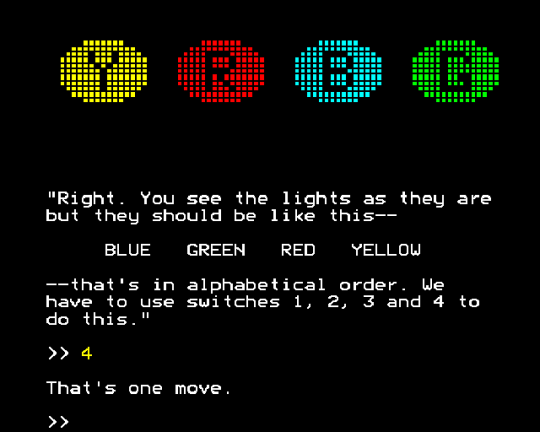
There was a puzzle where you had to combine spotlight colours, which I solved, and one with a boat, which I could never seem to get past. I don’t know if it was really hard, or if I was just too young for it. But I still think about that crumbling palace, sometimes. Presumably my sister is still sitting on the lawn waiting for me to emerge. I wonder if she’s run out of problems yet.
STICKYBEAR MATH TOWN ET AL. (APPLE II, 1985 ONWARDS)

uA: Despite the name, Stickybear was a bear whose tailor told him suits were meant to fit that way.
Stickybear would attempt to teach me typing, shapes and “math”, but patently fucking failed.

The Stickybear adventure I recall most vividly was Stickybear Math Town, in which the eponymous Stickybear does a variety of maths activities that seemed unnecessary to me at the time: for instance, every trip to the grocery involved long division. I guess that’s how life treated you in Math Town.
I have never lived in Math Town. I would go weekly to Kip McGrath, the local NZ tutelage jail, in an optimistic attempt to get my maths up to passing School Cert. I remember Stickybear Math Town as little more than an Anathem-style parade of impossible cake calculations. Humiliatingly, keep in mind that it was the early noughties and that I was fifteen. Stickybear sometimes had to catch fruit that rained from the sky in order to get his hundreds, tens and ones in order, and I remember getting quite good at that, though not good enough to get more than 45% for my fifth-form qualification.
I only found out this hot second that Stickybear Math Town was for children with learning disabilities, so my whole life just got rudely explained, I guess.

I think I have dyscalculia, Stickybear.
HAZARD/RESCUE (BBC/ACORN, ????)
pT: I want to start this with a heartfelt appeal: if anyone out there on the Internet has any idea how I could get my hands on a copy of Hazard/Rescue, please, please let me know. Of all the games I’ve ever played, it’s the one I’d most like to play again, and yet no-one seems even to remember it existed. I sometimes feel that creeping sense of Candle Cove about it.
Hazard/Rescue was a very early game making program. It was actually two halves, hence the weird name. Hazard let you construct a very basic text adventure to your own specifications. You could lay out rooms on a map, and then fit them out with either items or obstacles. Each obstacle required a specific item to get past. So: 'You are in the BONDAGE DUNGEON. There is a MALFUNCTIONING SEX DROID here. Do you have the ROCKET LAUNCHER?’. If you didn’t, you had to go and explore somewhere else to try and find the rocket launcher so you could keep going. But all of the flavour text - the names of the rooms, their descriptions, the obstacles and the items - you could fill in yourself. Then you could save the game as a file, switch over to Rescue, and play it - or get your friend to.
I hardly ever got time to play Hazard/Rescue, but I planned so many games. I wrote pages and pages of dense, elaborate adventures, requiring dozens of rooms and interconnected obstacle-item chains. Only a couple of them ever got made because computer time was so limited. One of my teachers said she’d try and procure me a copy of the game, because I loved it so much, but our only computer at home was an Amstrad electronic typewriter my Dad used for work, so I couldn’t have played it. I know that in a world where Twine and Ren'Py and RPG Maker exist Hazard/Rescue has moved beyond 'obsolete’ into 'perhaps this crude tool was once used by Cro-Magnon Man in his long migrations across the steppe’, but all the same, it was Hazard/Rescue that showed me how much I love making games. It was so simple, and it put so few barriers between you and what you wanted to build: no coding, no tutorials. You just imagined a game and typed it in, basically, and then your friends could play it. It was extraordinary.
They say that everything’s on the Internet somewhere. So far I have found that the one exception to this rule is Hazard/Rescue. But I keep looking, every year or so, just in case.
TREASURE MOUNTAIN!/TREASURE MATHSTORM! (PC, 1990)

uA: In the “Treasure” games of the Super Solvers series you went up a mountain to fox a guy called the Master of Mischief. There were other games in the Super Solvers brand, and I think they took place in schools and in cities and things, but I only cared about the mountain. The mountain is really the main character in the Treasure series, and the mountain was a symbol of unfettered hoarding.
Treasure Mountain! made you solve general-education questions – maths, spelling, verbal and non-verbal logic – in order to accumulate hidden treasures, which the Master of Mischief had stolen and dumped all over the mountain. At the summit you would drop all your treasures in a box and slide down to the bottom where you would get a single treasure for your trophy room. Then you’d start again. The more treasures you got, the higher your rank would tick up, which enticed you to find as many poorly-rendered treasures as possible. Treasure MathStorm! was exactly the same, only here the Master of Mischief had made it permanent winter on the mountain: it was always maths and never Christmas.
Your goal was to collect keys, money and nets. The keys were hidden in different mysterious groups of objects around the level. The money let you buy goods and services, and also, bewilderingly, could be expended to examine the groups of objects to find the keys. The nets would let you fuck up elves.

Caught elves would give you clues if you answered their questions correctly. Even if you got it wrong they’d give you a tiny amount of money. After reading my travails with Stickybear you might wonder how a youth such as myself could get through Treasure! without having to see the child psychologist, but the maths questions in Treasure Mountain! generally did not tax me.

Ten-year-old uA was confident that this one was possible.
Treasure MathStorm! was significantly harder (for me). Lots of the puzzles were fun, like working out weights and measures, but there was one puzzle called the “Time Igloo” that was my Siege of Rhodes. While we’re on embarrassing mathematical facts about yours truly, I still can’t read analog time, so when I was presented with this shit –

– I just fucked right off.
Thankfully you could do that. It was perfectly possible to scale the mountain with minimal treasures in either game. I think my favourite way of playing it as an urbanAnchorling was to stay on a single mountain level, earn fat stacks of cash, and buy a thousand nets to catch elves with. Not to answer their questions, mind, just for a psychosexual childish thrill.

It’s 30!!! I could go pro e-sports on this game now.
RUNNER-UP: LIFE AND DEATH (PC, 1988)

uA: You are an abdominal surgeon! Perform an appendectomy! See the words ‘subcutaneous fat’, then run away!!!!
I was doing my First Aid refresher training the other week and had to leave the room because the nurse mentioned the words “fingernail slippage”. I couldn’t come back for like five minutes. I’m on the hook to write a space horror trilogy about necromancers, just so you know.
RUNNER-UP: ???? (PRESUMABLY BBC/ACORN, ????)
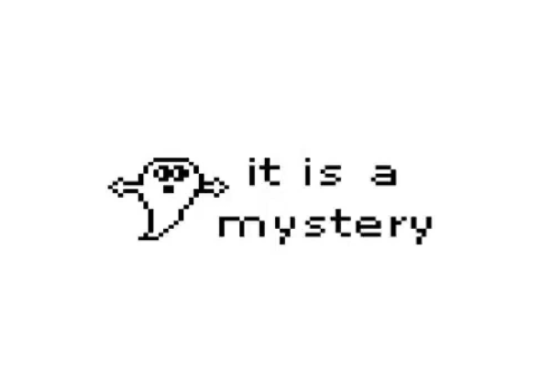
pT: This was a puzzle game. It was brightly coloured, and had maths. All I remember - actually literally all I remember - is that it came in two parts, on two separate disks, and at the end of part 1 you fell into a river and were washed away. This was a huge cliffhanger. There was a little animation of you being swept down a bright blue river between hot green banks, your mouth an open black clump of pixels, and then it came up with 'Please Insert Disk 2’ or some equivalent dread mid-90s phrase of command. Problem was, our teacher had lost Disk 2. So I got to the end of Part 1, fell in the river, practically sprinted up to the teacher’s desk to find what happened next, and received the bad news.
But the teacher was sweetly optimistic that Disk 2 would turn up. So I couldn’t even grieve. I was forever caught between sorrow and hope, wondering each day if she would come up to me and say 'Guess what I found down the side of my desk!’
I am still waiting for Disk 2. I bet it’s going to be amazing.
RUNNER-UP: RAFT-AWAY RIVER (APPLE II, 1984)

uA: This was in the computer lab at school when I was in Standard Three. Pretty much every action you took made you wet or dying.
I played this just now on archive.org and died from being wet.
“Public libraries are such important, lovely places!” Yes but do you GO there. Do you STUDY there. Do you meet friends and get coffee there. Do you borrow the FREE, ZERO SUBSCRIPTION, ZERO TRACKING books, audiobooks, ebooks, and films. Have you checked out their events and schemes. Do you sign up for the low cost courses in ASL or knitting or programming or writing your CV that they probably run. Do you know they probably have myriad of schemes to help low income families. Do you hire their low cost rooms if you need them. Have you joined their social groups. Do you use the FREE COMPUTERS. Do you even know what your library is trying to offer you. Listen, the library shouldn’t just exist for you as a nice idea. That’s why more libraries shut every year
If this post persuades even one person to get a free library account and use it, my time on this hellsite will not have been spent in vain
When I got laid off from my long time job back in 2020, I had no current resume and no working home computer, just my phone. The library made it possible to write a resume and cover letter, apply for unemployment, apply for jobs and print out any required forms related to the above.
All for free. 100% free. I didn’t pay a dime. I also decided that since I usually only read non picture books once, getting them from the library was the best way to do it and I don’t have to spend 8$-20$ for a novel or try and find a safe free download of it.
Libraries baby! A public good! The library is fun and educational! Also at my library you can rent a Gieger counter!
A lot of libraries are signed up with Kanopy, a video streaming service.
You get 20 free credits a month do watch whatever, and it’s not just oldy moldies - there are some really recent movies and documentaries on there.
Also you ever hear Great Courses? And see what they normally cost?
Free on Kanopy. Don’t even cost credits.
I’ve watched 24-part lecture series’ on extreme weather, cooking through history, science fiction literature, forensics history…
And it’s free with your library card.
TUMBLR I HAVE A BOOK! Please help spread the word about my educational comic book about smoking cannabis. It’s filled with wonderful characters, a couple songs, and plenty of fun activities to do while smoking weed. Even if you already know how, there’s something for everyone in this!
https://www.kickstarter.com/projects/ironspike/how-do-you-smoke-a-weed
Post link
What have I been doing for the last couple months?
Drawing this comic! Now the b&w version is available to read for only 5 smackaroos!
https://ironcircus.com/shop/ebooks/77-how-do-you-smoke-a-weed-pdf-ebook.html
It’s a fun read while smoking weed~
Post link
Reader Rabbit is an edutainmentsoftware franchise created in 1983 by The Learning Company. This series is aimed at players aged from infancy through second grade.
Generally, the games in the series taught language arts, featuring a variety of simple games designed to teach schoolchildren basic reading and spelling skills. This later expanded to include math and writing.
Post link






Some of my “offices” in the last few weeks that I’ve performed and gotten busy as i’ve been touring doing my hip hop artist, performance poet, author, edutainer thing!
Birmingham, Didsbury (Manchester), Laurus Cheadle Hulme (Manchester), Northwood (London), Tor Bridge (Plymouth), Cheadle Hulme (Manchester)

Newest episode of SCARY ITCHES is up and ready for you ear drums wherever you listen to podcasts.
It’s fun horror. It’s funny horror.
I‘m so happy to work on this project!!
Sth off-topic but pretty nice.. A short film project “our” @lovecrimecat helped organize.
Author’s explaining what fascinates them about their favorite books. First episode is about Lovecraft’s “Color out of Space”.
It’s in German with English subtitles.

This weekend! A Gathering of Rogues & Ruffians in New Glarus, Wisconsin! This sweet little faire is a fundraiser for youth programs for Shakespeare in the Edge. You can see all kinds of fantastic shows, shops, & see @gsm_bristol cause loud noises. They’re so awesome & entertaining your kids won’t even realize they’re learning! #GRR #AGatheringOfRoguesAndRuffians #ShakespeareOnTheEdge #renaissancefaire #PattySmithGRR #photography #NikonD5100 #reenactors #GSMbristol #edutainment (at Wilhelm Tells Shooting Park)
Post link


